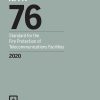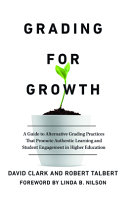Transparent Design in Higher Education Teaching and Leadership A Guide to Implementing the Transparency Framework Institution Wide to Improve Learning and Retention 1st Edition by Mary-Ann Winkelmes 9781000978322 100097832X
$50.00 Original price was: $50.00.$25.00Current price is: $25.00.
Transparent Design in Higher Education Teaching and Leadership A Guide to Implementing the Transparency Framework Institution Wide to Improve Learning and Retention 1st Edition Mary-Ann Winkelmes – Ebook Instant Download/Delivery ISBN(s): 9781620368244, 1620368242, 9781000978322, 100097832X

Product details:
- ISBN 10: 100097832X
- ISBN 13: 9781000978322
- Author: Mary-Ann Winkelmes
This book offers a comprehensive guide to the Transparency in Learning and Teaching (TILT) framework that has convincingly demonstrated that implementation increases retention and improved outcomes for all students. Its premise is simple: to make learning processes explicit and equitably accessible for all students. Transparent instruction involves faculty/student discussion about several important aspects of academic work before students undertake that work, making explicit the purpose of the work, the knowledge that will be gained and its utility in students’ lives beyond college; explaining the tasks involved, the expected criteria, and providing multiple examples of real-world work applications of the specific academic discipline. The simple change of making objective and methods explicit – that faculty recognize as consistent with their teaching goals – creates substantial benefits for students and demonstrably increases such predictors of college students’ success as academic confidence, sense of belonging in college, self-awareness of skill development, and persistence. This guide presents a brief history of TILT, summarizes both past and current research on its impact on learning, and describes the three-part Transparency Framework (of purposes, tasks and criteria). The three sections of the book in turn demonstrate why and how transparent instruction works suggesting strategies for instructors who wish to adopt it; describing how educational developers and teaching centers have adopted the Framework; and concluding with examples of how several institutions have used the Framework to connect the daily work of faculty with the learning goals that departments, programs and institutions aim to demonstrate.
Table contents:
PART ONE: THE FUNDAMENTALS OF TRANSPARENT DESIGN FOR FACULTY
1 WHY IT WORKS Understanding the Concepts Behind Transparency in Learning and Teaching
2 HOW TO USE THE TRANSPARENCY FRAMEWORK
3 FACULTY VOICES AND PERSPECTIVES ON TRANSPARENT ASSIGNMENT DESIGN FAQs for Implementation and Beyond
PART TWO: TRANSPARENT DESIGN FOR FACULTY DEVELOPERS
4 TRANSPARENCY AND FACULTY DEVELOPMENT Getting Started and Going Further
5 DESIGNING TRANSPARENT ASSIGNMENT IN INTERDISCIPLINARY CONTEXTS
6 INTEGRATING TILT INITIATIVES THROUGHOUT A CENTER FOR TEACHING AND LEARNING Educational Developer and Instructor Insights
7 USING PRINCIPLES FROM TILT FOR WORKSHOP DESIGN AND MEASURING THE IMPACT OF INSTRUCTIONAL DEVELOPMENT
PART THREE: TRANSPARENT DESIGN ACROSS HIGHER EDUCATION
8 TRANSPARENCY IN FACULTY DEVELOPMENT COLLABORATIONS AT A MINORITY-SERVING RESEARCH UNIVERSITY
9 TRANSPARENCY AND THE GUIDED PATHWAYS MODEL Ensuring Equitable Learning Opportunities for Students in Community and Technical Colleges
10 TRANSPARENCY TO CLOSE OPPORTUNITY GAPS IN THE LARGEST STATE SYSTEM A Pilot Experiment
11 TRANSPARENT INSTRUCTION IN A STATEWIDE HIGHER EDUCATION NETWORK
12 ASSIGNMENT DESIGN AS A SITE FOR PROFESSIONAL DEVELOPMENT AND IMPROVED ASSESSMENT OF STUDENT LEARNING OUTCOMES
People also search:
transparent design in higher education teaching and leadership
what is transparency in education
transparent design
transparency in higher education
higher education design
transparent assignment design
You may also like…
Education Studies & Teaching - Higher & Further Education
Education Studies & Teaching - Teaching & Teacher Training
Education Studies & Teaching - Teaching & Teacher Training
Education Studies & Teaching - Higher & Further Education
Crisis Leadership in Higher Education Theory and Practice 1st Edition Ralph A. Gigliotti
Education Studies & Teaching - Higher & Further Education
Education Studies & Teaching - Higher & Further Education
Digital Agency in Higher Education Transforming Teaching and Learning 1st Edition Toril Aagaard
Education Studies & Teaching - Higher & Further Education












